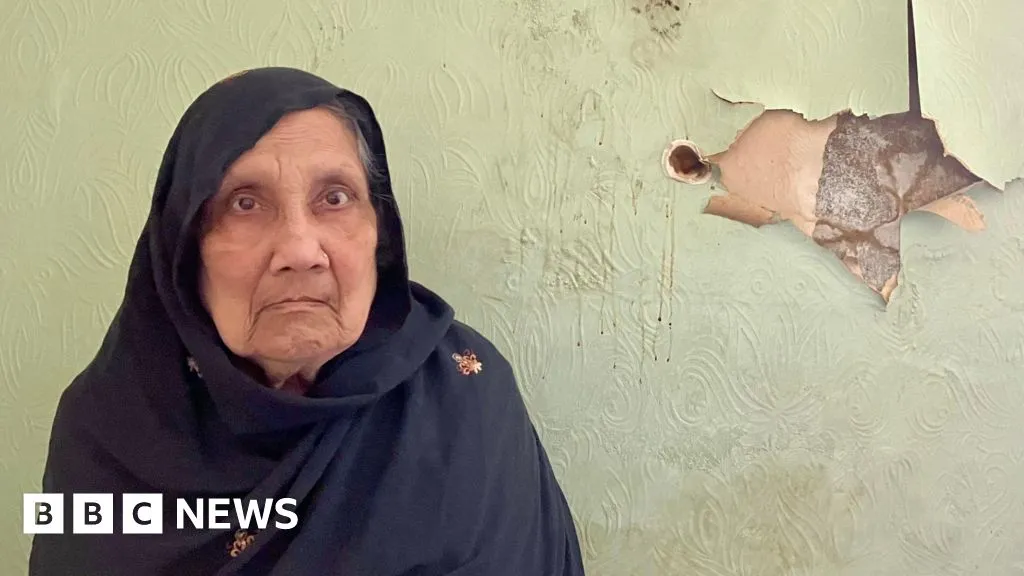In November 2022, Mrs Khatun had her house insulated under a government scheme known as ECO 4. It is designed to help low-income households make their homes warmer and cut their energy bills. Insulation boards are fixed to the exterior brickwork of a house and then coated in render.
More than three million homes in the UK have had insulation fitted under government ECO schemes, which are paid for by the energy companies, with the cost passed on to all consumers through their energy bills.
The BBC revealed earlier this year that hundreds of thousands of these homes could have insulation that wasn’t installed to the required standard. Within months of Mrs Khatun getting her insulation fitted, it became clear that this was the case in her house. A surveyor’s report shows how rainwater penetrated the house leading to the damp, mould and dry rot.




My brother in Christ, how much do you know about housing? Renovations? Insulation? Mycology?
The standard that likely had not been followed was ensuring that the property was watertight to begin with.
The dry rot that is spreading through their house is effectively going to condemn it.
Your take of “hurdur, how hard could it be to do some insulation? you glue on the boards, mesh and render” is asinine at best.
Lots of these companies didn’t do their due diligence to ensure the suitability of the properties before installing.
Which then disproportionately effects people who are less likely to be able to afford repairs due to them already being on very limited lower incomes, the exact reason why they are getting this work done via these schemes.
I took wouldn’t want to trust the same company that put me into that position to be the one to rectify it.
I know a lot about building and insulation. The most likely cause of this is pre-existing damp that was just exasperated by the insulation making it warm on top of the damp.
If there is any sign of “rising damp” the modern way of dealing with it is by installing a layer of DryRods, however if the insulation was installed during a particularly dry period there might not have been evidence of a pre-existing problem.
Other than that possibility it could be an unrelated pipe leak, physical damage to the insulation and render, or an issue with the guttering.
Finally cold-bridging where a portion of the envelope of the house is uninsulated and forms condensation, this is pretty much the only issue which could be a mistake on behalf of installer, but even then it should be obvious and made worse by failing to open windows or turn on extractors when showering, drying washing or cooking.
Any of this information could have been in the article, it’s absence is suspicious. Whatever the reason the first thing you need to do is let the contractor investigate.
I agree but I can see why someone might not want to invite the people they feel ruined their home back to have another go.
I agree, but then articles like this are the reason these people are so annoyed at the installers, they make it sound like there are mysterious procedures and practices which are not being followed, while failing to detail any of them and making the problem worse.
Anyone reading this will only ever come to the conclusion that they had a bad installer and won’t want their help, all while their house is turning into a stroganoff.
There is another thing that I sometimes talk about on here, breathability.
You either need to prevent any moisture moving in any direction, or allow vapor to move with breathable materials.
Ones that allow water vapor to move, but not liquid water.
Older buildings, where the original materials were breathable, should ideally continue to use breathable materials. This prevents issues with water wicking through one old surface, then getting trapped behind another. It also removes the risk of damaged or badly designed vapor barriers allowing things through, as the materials themselves help get the moisture out as a passive action.
I’m not aware of any insulation and rendering options that allow breathability of the sub structure. This is why any internal leaks need to be fixed and rising damp needs to be mitigated with DryRods.
Pretty much the only buildings that cannot be insulated without a massive amount of work is where the floor of the building is sitting in groundwater without a waterproofing membrane.
I like to think of it like a passive action that helps handle the smaller amounts of moisture (humans breathing, cooking, laundry), but also an action that helps reduce the problems of acute issues that occur. That way, when something does happen, there is at least a dampening effect while the leak is fixed.
Leaks and rising damp still need to be addressed, obviously.
Examples are things like vermiculite render on the outside, Steico/Wool batts as normal insulation.
The downside is, it’s expensive. The insulation is only as good as fibreglass/rockwool, and costs about 3x as much.